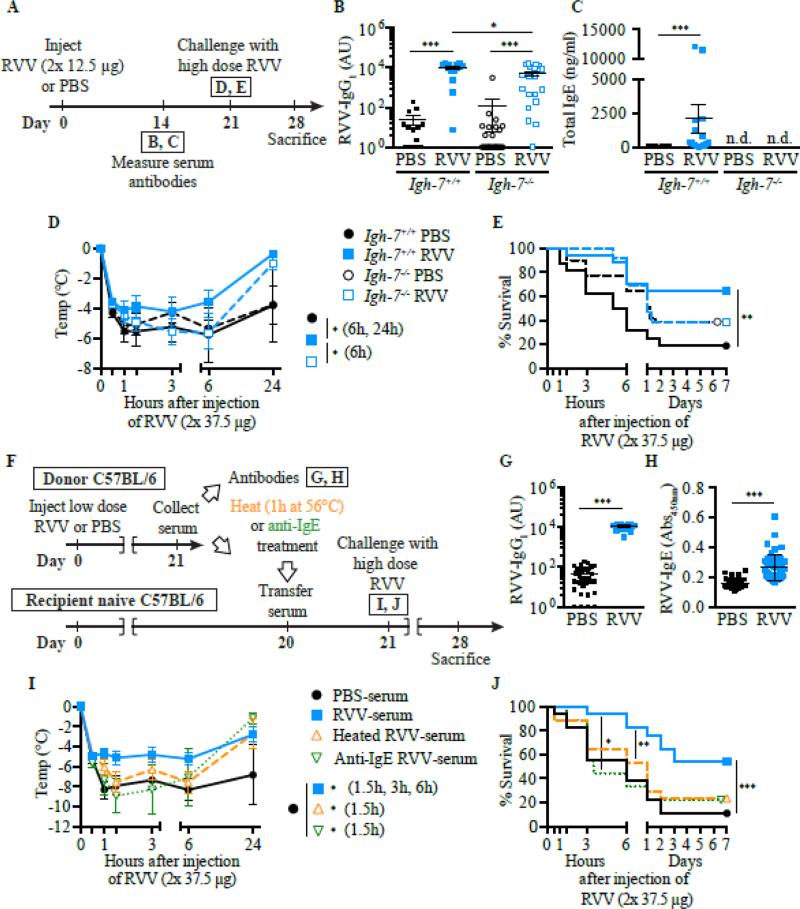Fig 1.
IgE can contribute to acquired resistance to RVV. A Outline of experiments with IgE-deficient (Igh-7−/−) and control (Igh-7+/+) C57BL/6 mice (B-E). B and C, Serum RVV-specific IgG1 (B) and total IgE (C). D and E, Body temperature (D) and survival (E). F, Outline of serum transfer experiments in C57BL/6 mice (G-J). G and H, Serum RVV-specific IgG1 (G) and total IgE (H). I and J, Body temperature (I) and survival (J). Data were pooled from 3-4 experiments (n= 9-25/group). In B, C, G and H, data are shown as individual values and mean±SEM. P values were determined as follows: Mann-Whitney test (B, C, G, and H), Student t test (D and I) and Mantel-Cox test (E and J). *P<0.05, ** P<0.01, and *** P<0.001. n.d., Not detectable. This is a reproduction of Fig. 3 from Starkl P, Marichal T, Gaudenzio N, Reber LL, Sibilano R, Tsai M, Galli SJ. IgE antibodies, FcεRIα and IgE-mediated local anaphylaxis can limit snake venom toxicity. J Allergy Clin Immunol, 2016; 137: 246-57 (ref. [148]), reprinted with the permission of the publisher, Elsevier.

